Looking at Depression through the Lens of Hannah’s Story

As we continue to try to look at how stories from the Bible can help us as we strive to find mental health and balance, today we turn to how Hannah endured what can only be described as depression- and what we can learn from how she dealt with it.
Before you read on, read 1 Samuel Chapter 1!
Read it a couple times if you need to, trying to tease out what God wants you to discover in the reading.
First: what is happening? What’s the context?
Hannah is married to Elkanah, as is Penninah. While Penninah has multiple children, Hannah struggles to become pregnant.
The context is important here! Infertility is painful for anyone who wants to become a parent, but at that time in a hierarchical and patriarchal society, simply being a woman automatically made one vulnerable. Being infertile would have made Hannah even more marginalized.
Additionally, we see that Peninnah was not a compassionate friend but instead teased and humiliated Hannah, undoubtedly making her feel even more alone.
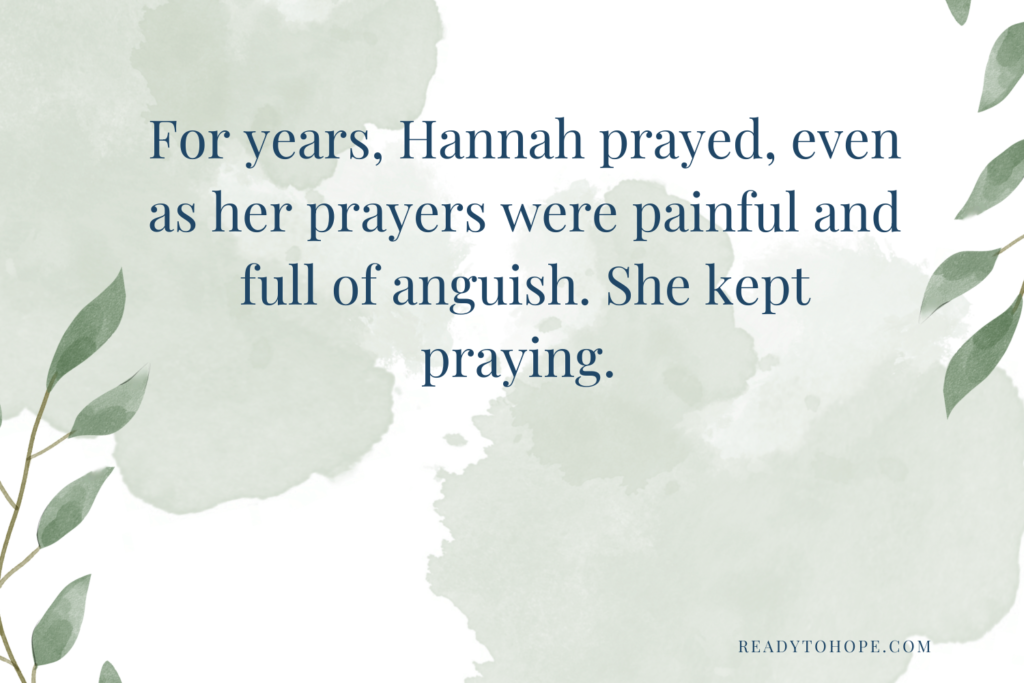
Hannah’s distress manifested in a number of ways. She is described as weeping bitterly, being unable to eat, and deeply sad. The story also talks about how Elkanah struggled to console her, possibly because he was also sad about her infertility or simply because he was not equipped and did not know how to do so.
While this is a story about Hannah’s infertility, when we look at the details, we can easily determine: Hannah was deeply sad, and likely even depressed.
So while this is a story about Hannah’s infertility, we can learn from Hannah how to handle any depression or any difficult situation that results in profound sadness.
What are the tools that Hannah uses and what can we learn from her?
For years, Hannah prayed, even as her prayers were painful and full of anguish. She kept praying.
Finally, in a particularly difficult moment, Hannah prays “Oh Lord of Heaven’s Armies, if you will look upon my sorrow and answer my prayer and give me a son, then I will give him back to you. He will be yours for his entire lifetime….”
Hannah knew that God was faithful, and so she turned to him over and over again as a way to manage her pain and despair.
Hannah’s story teaches us that there is hope, and to do what we can to stay connected to hope, even when our prayers go unanswered, and even when they go unanswered for a long time.
Hannah teaches us to take our pain to God, over and over again.
Hannah teaches us that it’s okay to cry out to God at our lowest. And we can learn from her story that God sees our pain.
And while we may pray for the pain to stop, and while doing so is perfectly okay and reasonable, the practice of taking it to God is where we can be transformed.
Hannah eventually does become pregnant with Samuel, dedicates him to God, and he goes on to become the last judge and the first prophet!
Tool: ACT therapy’s values-based living
(Reminder: you can check out this post to learn more about ACT therapy in general, including why we like it so much and love to use it as an overarching umbrella in terms of proven psychological tools and resources.)
Depression hates a moving target.
While this isn’t an ACT principle necessarily, nor is it even a psychological principle affiliated with any particular approach, it is a commonly accepted phenomenon.
Being in action is helpful for depression and sadness.
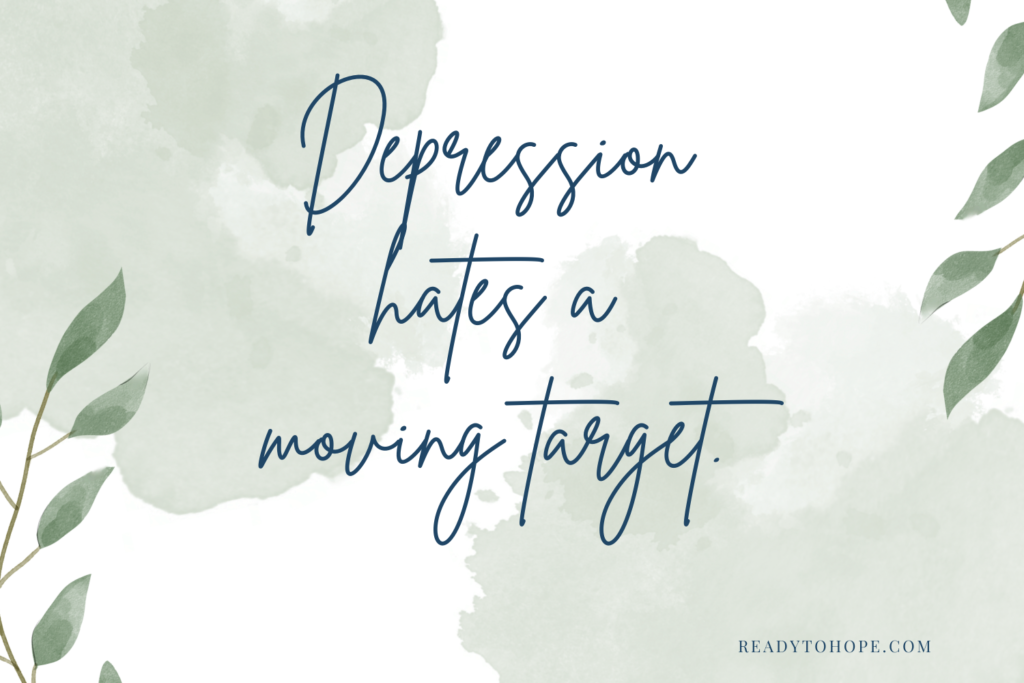
Doing isn’t a cure for depression, no. But feeling a sense of accomplishment and purpose can most definitely alleviate symptoms in the moment.
So for today’s discussion, we are going to tap into three of the six ACT principles:
- Mindfulness
- Clarifying values
- Committed action
Mindfulness applied to depression and sadness
Within Acceptance and Commitment Therapy, mindfulness is one of the main overarching principles because it encourages being in the present moment.
Intellectually, everyone can recognize that life is lived in the present moment. You can’t go back and have a do-over on anything in the past. And worrying about the future doesn’t change the future, it only makes the present more challenging and unpleasant.
Enter mindfulness.
The key here is to observe, without trying to change.
It can be as simple as saying, “I am noticing that I feel sad right now.”
And perhaps even noticing what that feels like in your body.
“I notice that the sadness feels like a lump in my throat.”
Or how that sadness affects how you see your roles and responsibilities.
“I am noticing that I don’t feel motivated to do work right now.”
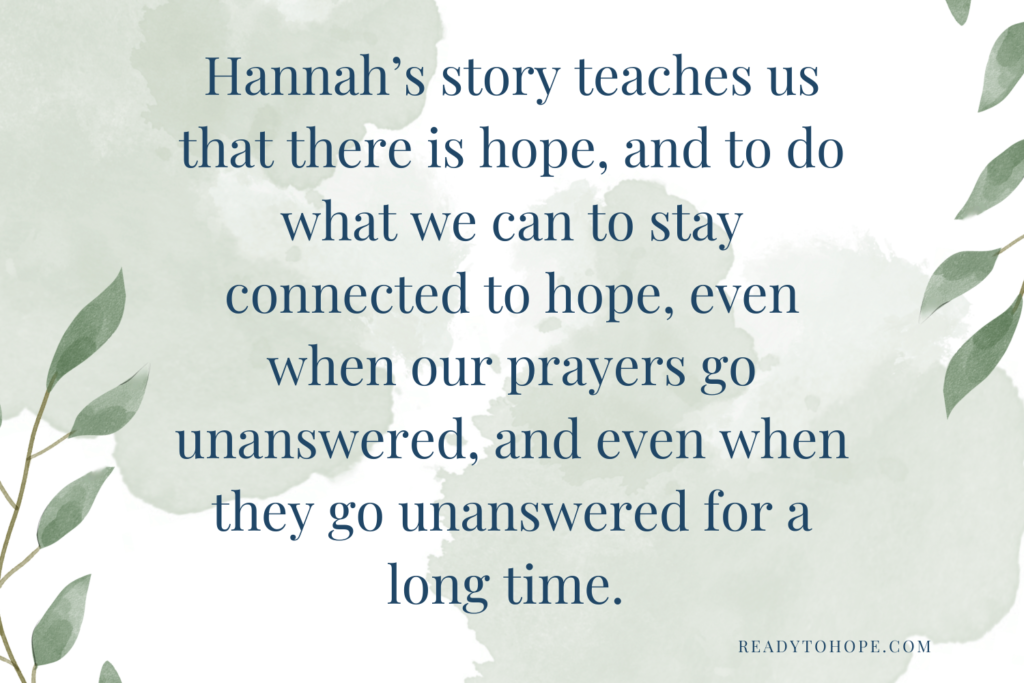
Mindfully observing can bring you into the present moment.
And then you can begin to expand your awareness. What is happening around you? What sounds do you hear? What smells? What does the seat beneath you feel like? What is the temperature in the room?
Being in the moment, mindfully observing what you are feeling, can ground and center you, so that you can go on to the next steps.
What did you notice about how Hannah experienced her sadness? Did you notice her ever observing it in the moment?
Clarifying values, applied to depression and sadness
Identifying and clarifying values is another of the six main ACT principles.
Once you have been able to drop into the present moment by mindfully observing your own thoughts and feelings, and then expanding your awareness to the world around you, you are hopefully in a position to now begin to commit to moving in a direction that is meaningful to you.
Even in the midst of challenging life circumstances, even in the midst of sadness, you are still you.
You are still someone who has dreams and desires and wishes for your future and how you want to live and be in the world.
So once you ground and center, you can begin to expand your attention to:
What matters most to me? How do I want to show up? How do I want to be remembered? What do I want people to say about me?
The answers to those questions can help you discover and reconnect with your values.
If you haven’t ever done a values-clarification exercise, you can download one here.
And if you have already, and you know your values, this is a good time to remind yourself what matters most to you.
What did Hannah show us about her own values in 1 Samuel? What can you take from her story?
Once you’ve connected with your values, you are ready to commit to action!
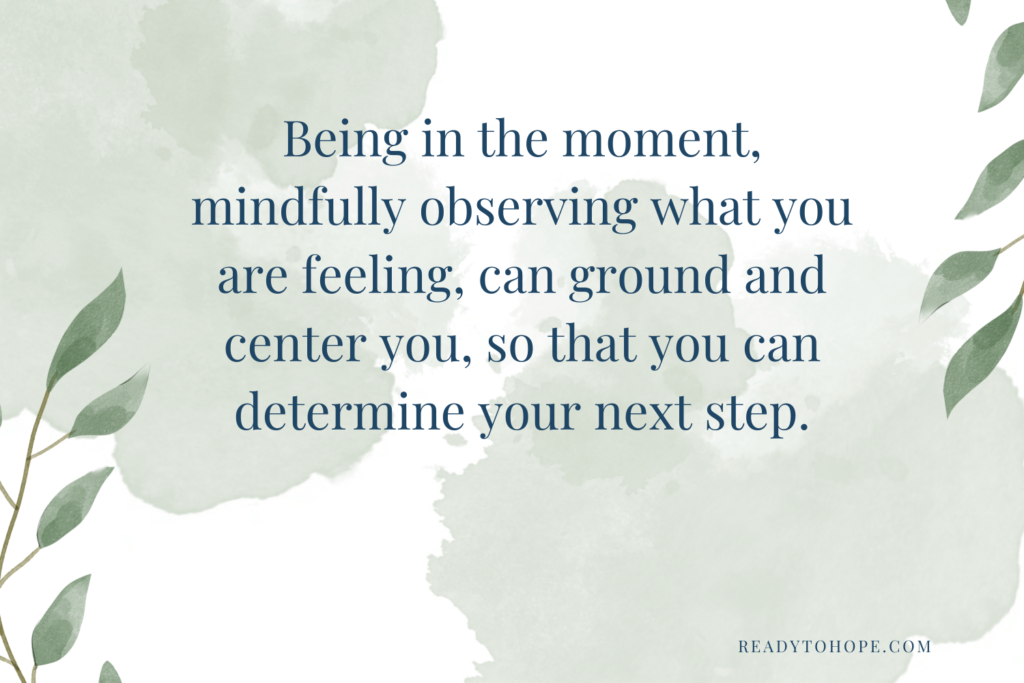
Committed action applied to depression and sadness
Again, we want to be clear: simply being busy is not a cure for depression. We don’t want to minimize the truth that it can take weeks and even months to move through depression and get to a better place.
However, we also want to be sure to communicate: depression does indeed hate a moving target.
When you are feeling sad, the steps of mindfully observing your feelings and then connecting mindfully with your current situation, then clarifying your value, and finally taking action- these steps can be powerful in helping you feel better in the moment!
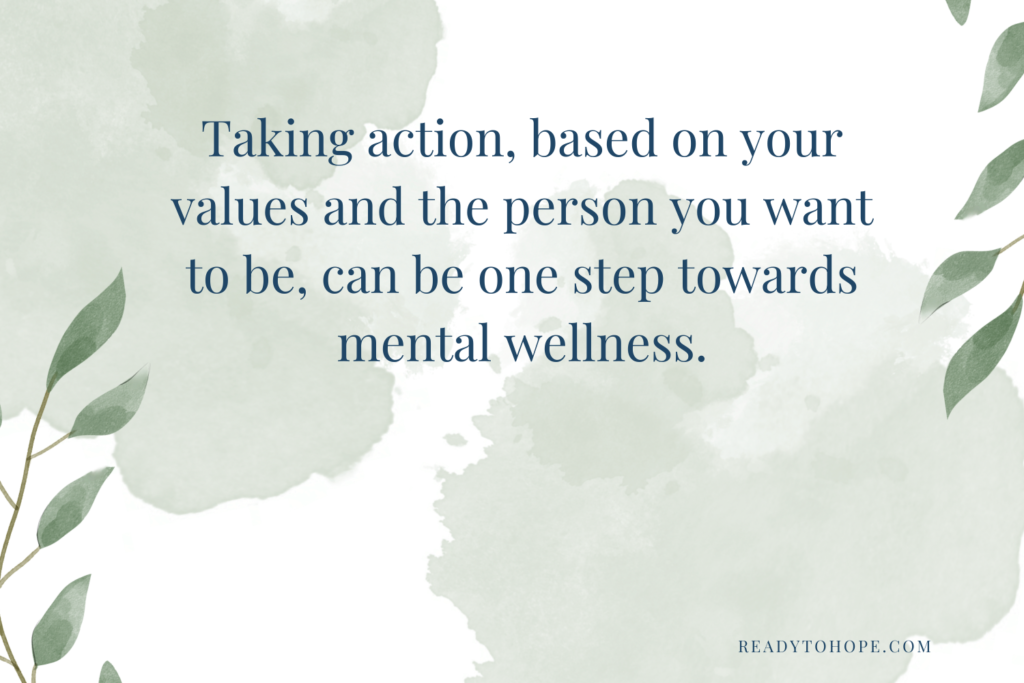
You may choose to begin a big project, or you may choose to accomplish one small task, but either way, simply doing something can have a big impact on your well-being!
So what’s the next small step you can take, towards the life you want and the person you desire to be?
Hannah’s story can be a powerful reminder
What then can we take from Hannah’s story, combined with a few handy ACT principles?
First: prayer is always a good idea.
In Hannah’s case, she was in the moment, and took her pain to God.
Second: connect with your values, and then take action.
Hannah showed us what she valued most: having a child, and her commitment to honor God in how she lived her life. She cried out to God that if he would give her a child, she would dedicate that child to him. And her faith and obedience were rewarded.
Our job is to remember that God’s always listening, always faithful, and that while we wait on him, we can continually pursue a life that is devoted to the values and virtues he places on our hearts.
Prayer of Response:
Dear Heavenly Father, I pray that you may guide my heart and mind to be devoted to your calling. May you fill me with your joy and the hope that you provide, the joy that can only come from you, and the hope that is firmly rooted in the good name. I pray that you may use me as you are willing, that I may be at your service, dedicated to prayer and a persistent relationship with you. May you break down the chains of the enemy, and may I surrender my heart to you, so that I may live a holy life of radical trust and obedience. You are a good father and all things happen according to your plans that can not be changed or stopped, your plans for my life are in your hands, and I trust you with those plans. In Jesus name, I pray Amen.
And as always, we would love if you’d like to join our outpost! You can email us here for more info!

